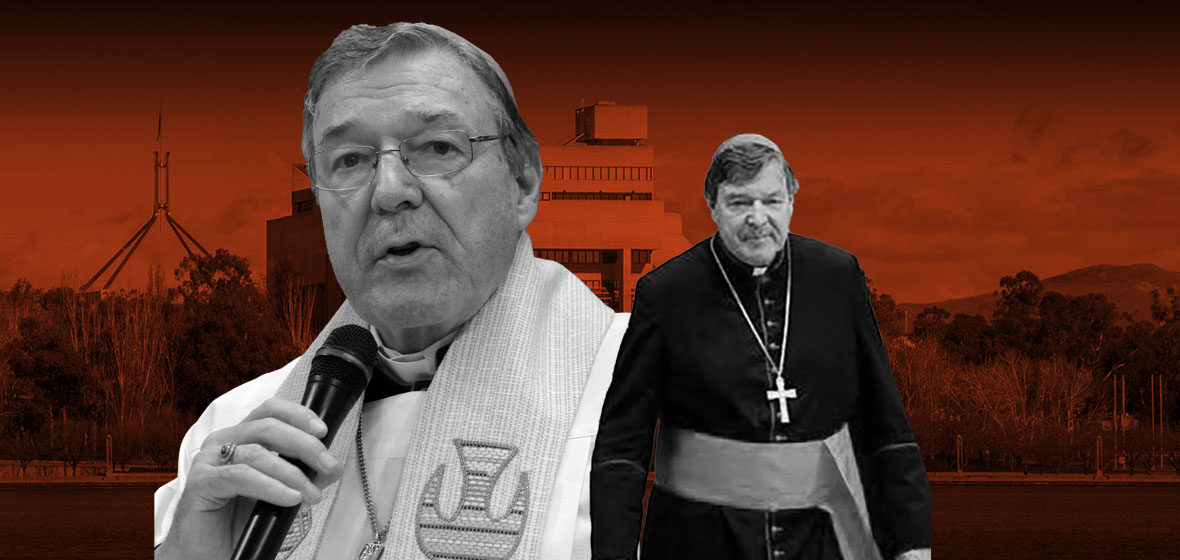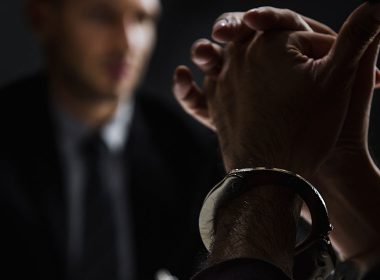This legal update, originally published in May 2020, provides an analysis of the The High Court's verdict and its implications for the role of appellate courts in reviewing ‘unreasonable’ guilty verdicts.
Snapshot
- It is the province of the jury, but not an appeal court, to determine the weight to be given to a witness’ evidence by reference to the manner in which it was given.
- Video recordings of evidence should only be viewed by an appellate court in exceptional cases where there is a real forensic purpose in doing so.
- Assuming that the jury assessed the complainant as a credible and reliable witness, the ‘compounding improbabilities’ caused by unchallenged evidence which was inconsistent with the complainant’s account required the jury, acting rationally, to have a doubt about Pell’s guilt.
On 7 April 2020, the High Court upheld Cardinal George Pell’s appeal against conviction and acquitted him of five sexual offences. A single judgment was given for the full court, which held there is ‘a significant possibility that an innocent person has been convicted because the evidence did not establish guilt’ (Pell v The Queen [2020] HCA 12 at [9], [119], [127] (‘Pell’)). A majority of the Victorian Court of Appeal had earlier upheld Pell’s convictions, finding that his accuser, witness ‘A’, was ‘very compelling’ and a ‘witness of truth’ (Pell v The Queen [2019] VSCA 186 at [90]).
Few would doubt the importance of the High Court’s decision. The trials and punishment of George Pell were matters of high public interest. Cardinal Pell’s senior position in the Catholic Church and the work of the Royal Commission into Institutional Responses to Child Sexual Abuse impelled that outcome. However, the legal significance of the judgment lies elsewhere. The close appellate scrutiny given to the case comes at a time when criminal justice systems in this country are struggling to strike the right balance – between the expectations of victims and their supporters and the rights of the accused – in trials of child sexual offences. The High Court’s reasoning has important implications for the role of appellate courts in reviewing ‘unreasonable’ guilty verdicts and our understanding of the criminal onus and standard of proof.
Procedural history
Pell was committed for trial in relation to five sexual offences committed on two 13-year-old choirboys in late 1996 and early 1997. At that time, Pell was the recently appointed Archbishop of Melbourne. The boys are anonymised in the judgment as ‘A’ and ‘B’. It was alleged that on the first occasion Pell came across the boys in the priests’ sacristy of St Patrick’s Cathedral in East Melbourne after performing Sunday solemn Mass.
A and B had slipped away from the procession and located a bottle of altar wine. After rebuking the boys, Archbishop Pell, still fully robed, allegedly exposed his penis and committed various sexual acts upon A and B. The most serious act involved receiving fellatio from A. A also alleged there was a second incident at least a month later. On that occasion, after the procession following Sunday Mass, Archbishop Pell, again fully robed, allegedly pushed A against a wall of the sacristy corridor and squeezed his genitals.
A did not complain to police about the alleged assaults until mid-2015. B had died of accidental causes by this time. In 2001, B was questioned by his mother and denied that he had ever been ‘interfered with or touched up’ when he was a member of the Cathedral Choir. Pell consistently denied the offences when he was interviewed by police in Rome in October 2016. He did not give evidence at trial.
Pell was first tried in August 2018. The jury was unable to reach a verdict. He was tried again later that year and the second jury found him guilty of all five charges. He was sentenced to a period of imprisonment. He appealed against conviction to the Victorian Court of Appeal. His appeal was dismissed by majority (Ferguson CJ and Maxwell P). Weinberg JA, a criminal law specialist and former Commonwealth Director of Public Prosecutions, wrote a detailed dissenting judgment which concluded that the jury ought to have had a reasonable doubt about Pell’s guilt. Weinberg JA would have ordered acquittals on each charge.
Appellate review of ‘unreasonable’ jury verdicts
The ‘common form’ criminal appeal provisions in the various jurisdictions in Australia allow appeals against conviction on indictment to be brought on prescribed grounds. One such ground is that a verdict ‘is unreasonable, or cannot be supported, having regard to the evidence’ (see for example, Criminal Appeal Act 1912 (NSW), s 6(1)). Pell appealed to the High Court on two grounds. Both asserted error in the way Ferguson CJ and Maxwell P (‘the majority’) dealt with the ground that Pell’s verdicts of guilty were ‘unreasonable’ and could not be supported by the evidence.
There has long been tension in the law about the correct approach to resolving an ‘unreasonable verdict’ ground of appeal. If a panel of appeal judges holds a reasonable doubt about the appellant’s guilt, does it not follow that the guilty verdict should be set aside? After all, appeal judges have expertise in applying the correct legal test for liability and carefully weighing the evidence. However, such an approach tends to deny the special function and advantages of the jury. In our system of criminal justice, it is juries that are charged with determining the facts and, ultimately, guilt or non-guilt. And juries (at least up to recent times) had the advantage of seeing the witnesses give their evidence in court, as opposed to reading the evidence in the trial transcript. The countervailing view is that an appeal court should be reluctant to simply substitute its view of the evidence for that of the jury. Appellate jurisdiction is fundamentally concerned with identifying and correcting legal errors, not retrying cases and reconsidering the facts.
The High Court sought to resolve this tension in M v The Queen [1994] HCA 63; (1994) 181 CLR 487. It was held that an appeal court is to determine an unreasonable verdict ground by asking whether it thinks, upon the whole of the evidence, it was open to the jury to be satisfied beyond reasonable doubt of the accused’s guilt. However, it must ‘pay full regard’ to the jury’s ‘primary responsibility of determining guilt or innocence’ and its benefit of seeing and hearing the witnesses. Nevertheless, in most cases a doubt experienced by an appellate court will be one which a jury ought also to have experienced. It is only where the jury’s advantage in seeing and hearing the evidence is ‘capable of resolving a doubt experienced by an appellate court that it may conclude that no miscarriage of justice occurred.’ Debate over the meaning and application of this last condition is a recurring feature of ‘unreasonable verdict’ appeals in intermediate appellate courts.
The High Court in Pell did not question the correctness of M. The Court also did not derogate from Hayne J’s subsequent observation in Libke v The Queen [2007] HCA 30; (2007) 230 CLR 559 at [113] that asking whether it was ‘open’ to the jury to be satisfied of guilt involves asking ‘whether the jury must as distinct from might’ have entertained a reasonable doubt about guilt. Hayne J’s formulation was regarded as consistent with M (Pell at [45]).
The Court did, however, emphasise the very different functions of juries and appeal courts. It is the province of the jury to assess ‘the weight to be accorded to a witness’ evidence by reference to the manner in which it was given’ (at [38]). Jurors strive to reach unanimous decisions after sharing their subjective assessments of witnesses, a process that does not conform to the appellate jurisdiction. An appeal court should observe this ‘functional or “constitutional” demarcation’, otherwise trial by jury would become trial by an appeal court (at [37]-[38]).
Should an appeal court watch a video recording of the evidence?
However, the availability of video recordings of evidence challenges notions about the ‘advantages of the jury’. It is increasingly common in trials for child sexual offences for the complainant’s evidence (and sometimes that of other witnesses) to be video recorded. A’s examination in chief was pre-recorded. His cross-examination at the first trial was also recorded. Both recordings were played to the jury in the second trial.
Such procedural innovations, and the technology upon which they rely, beg the question: need an appeal court ‘pay full regard’ to the jury’s advantage of seeing and hearing the witnesses, when the appeal court itself is able to view the same recording of the critical evidence that was played to the jury? The Court of Appeal majority approached its task by trying to put itself ‘in the closest possible position to that of the jury’ ([2019] VSCA 186 at [33]). This included watching the recordings of witness A’s evidence.
The High Court disagreed with that approach. Following its earlier decision in SKA v The Queen [2011] HCA 13; (2011) 243 CLR 400, the Court held that video recordings of evidence should only be viewed by an appellate court in ‘exceptional’ cases where there is a ‘real forensic purpose’ in doing so (at [36]). This constraint on appellate review of the evidence may at first seem surprising. However, the Court explained that it reflects the functional or ‘constitutional’ demarcation between jury and appeal court referred to above. The acknowledgement in M of a jury’s advantage in seeing and hearing the evidence was never just about the ‘practical’ impediments to an appeal court performing the same assessment.
The close appellate scrutiny given to the case comes at a time when criminal justice systems in this country are struggling to strike the right balance – between the expectations of victims and their supporters and the rights of the accused – in trials of child sexual offences.
How important was the ‘compelling’ quality of A’s evidence?
The difficult (and ultimately determinative) issue posed by Pell concerned the significance to be attached to the second jury’s presumably favourable assessment of witness A. Was the appeal court required or even permitted to form its own assessment of witness A? How important were demeanour-based judgments in explaining the guilty verdicts? Were they capable of resolving doubts raised by other aspects of the evidence? The appellant argued that believing witness A was truthful was not sufficient to eliminate the reasonable doubt raised by other unchallenged evidence in the trial – evidence which was inconsistent with A’s account and which made the offences highly improbable.
The Court’s analysis of the functional demarcation between jury and appeal court produced an interesting outcome. The Court reasoned that ‘in a case such as the present’, an appeal court is to assume that the complainant’s evidence ‘was assessed by the jury to be credible and reliable’. But that is merely the starting point of the exercise. The task for the appeal court is to then examine the record ‘to see whether, notwithstanding that assessment – either by reason of inconsistencies, discrepancies, or other inadequacy; or in light of other evidence – the court is satisfied that the jury, acting rationally, ought nonetheless to have entertained a reasonable doubt as to proof of guilt’ (at [39], emphasis added).
The Court of Appeal majority concluded that witness A was a ‘compellingly truthful witness’. That ‘subjective assessment … drove their analysis’ – both of the cogency of A’s evidence and the ‘capacity’ of other exculpatory evidence. Noting Weinberg JA’s less positive assessment of A, the High Court expressly warned against ‘the highly subjective nature of demeanour-based judgments’ (at [49]). In summary, the majority erroneously strayed into the jury’s domain and placed undue weight on their perception of A’s ‘compelling’ quality as a witness. Their analysis failed to engage with the question posed by the appeal: did the body of evidence which was inconsistent with A’s account leave open a reasonable possibility that A’s account was not correct, such that there was a reasonable doubt as to Pell’s guilt? (at [46])
What was the evidence that raised a reasonable doubt?
The High Court carefully and forensically analysed A’s account in light of other evidence in the trial which tended to contradict his allegations. It then dissected the majority’s treatment of that evidence. It lies beyond the scope of this note to address the analysis in detail. To that end, there is no substitute for reading the judgment. However, the following may be drawn from the analysis.
Archbishop Pell celebrated Sunday solemn Mass in the Cathedral on only two occasions in 1996, on 15 and 22 December. It became the prosecution case that the first incident occurred on one of those dates. (This meant that the second incident could not have occurred in 1996 as was alleged by A.) The evidence scrutinised by the Court supported three inferences: (i) recently appointed Archbishop Pell adhered to his practice of greeting congregants on the Cathedral steps following Mass on both occasions in December 1996; (ii) consistent with Church doctrine, the Archbishop was always accompanied within the Cathedral, such as when he was assisted with removing his vestments; and (iii) the priests’ sacristy was a ‘hive of activity’ after Mass, including the coming and going of other concelebrant priests and altar servers. The evidence, which was given by numerous witnesses including the former master of ceremonies, Cathedral sacristan, choir marshal, altar servers and choir members, was largely unchallenged – notwithstanding that the prosecution was granted leave to expansively cross-examine on ‘unfavourable’ aspects of the evidence. The Court accorded great significance to that deficiency in the prosecution case.
Even assuming that the jury assessed A’s evidence as ‘thoroughly credible and reliable’, the ‘compounding improbabilities’ caused by the unchallenged evidence required the jury, acting rationally, to have a doubt about Pell’s guilt (at [119]). Put another way, notwithstanding that the jury found A to be credible and reliable, the evidence as a whole was ‘not capable of excluding a reasonable doubt’ as to Pell’s guilt (at [58]). Echoing the formulation used by Deane J and later Mason CJ in years past, the Court referred at three points in the judgment to the ‘significant possibility that an innocent person has been convicted’ (at [9], [119], [127]).
The upshot
The High Court has reaffirmed the particular responsibility of juries in assessing the weight of evidence by reference to witness demeanour. It has sought to constrain the function of appellate courts, so that criminal appeals do not become trials by appeal court. However, the judgment also implicitly warns against placing too much weight on highly subjective demeanour-based judgments and demonstrates the exacting nature of the criminal standard of proof. An appeal court must consider for itself whether the evidence as a whole was capable of excluding a reasonable doubt as to guilt.





